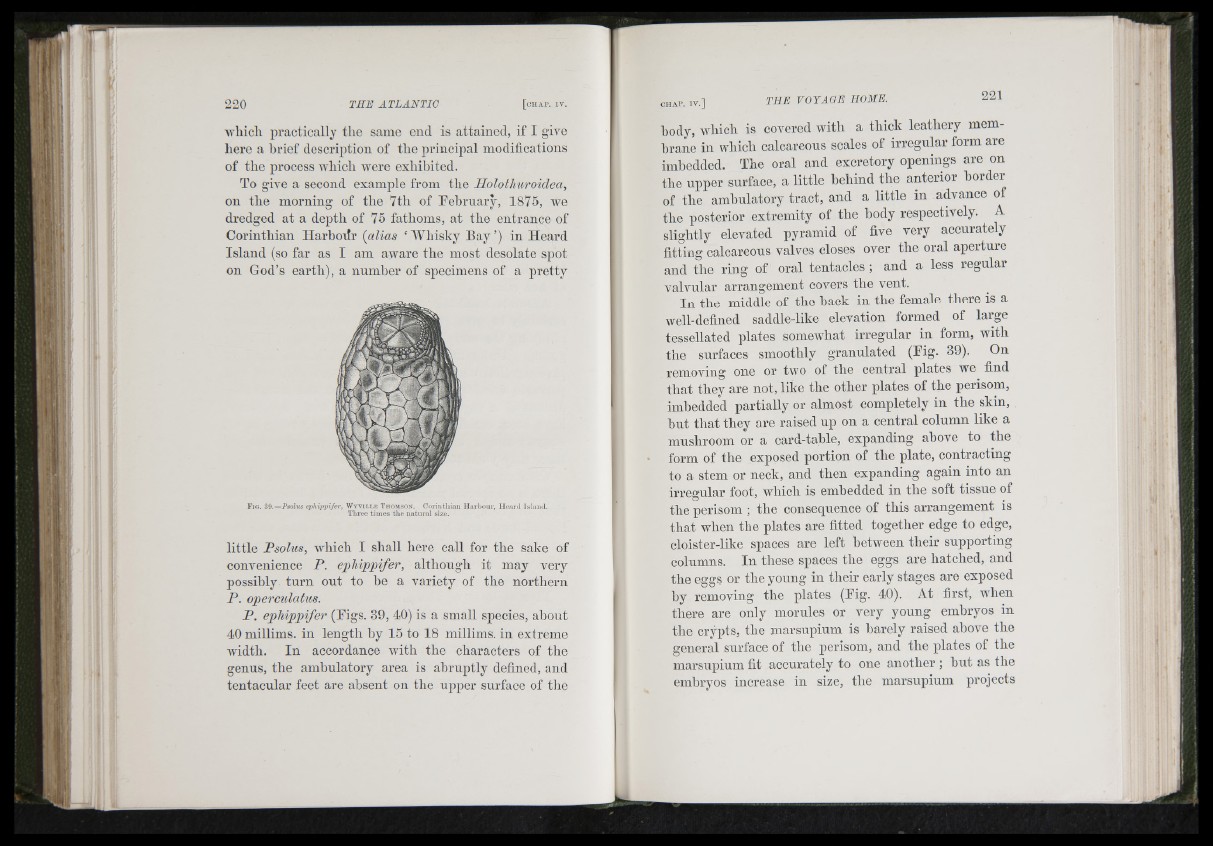
J'll
wliich practically the same end is attained, if I give
here a brief description of the principal modifications
of the process Avhich were exhibited.
To give a second example from tbe Holothuroidea,
on the morning of the 7th of Pehruary, 1875, we
dredged at a depth of 75 fathoms, at the entrance of
Corinthian Harbortr [cdias ‘AAHiisky Bay’) in Heard
Island (so far as I am aware the most desolate spot
on God’s earth), a nnmher of specimens of a pretty
F i g , 39.—Psolus ephippifer, W y v i l l e T h o m s o n . Corinthian Hurboui-, Heard Island.
Three times th e natural size.
little Psolus, Avliich I shall here call for the sake of
convenience P. ephippifer, althongh it may very
possibly turn out to he a variety of the northern
P. opei'CiUcdus.
P. ephippifer (Pigs. 39, 40) is a small species, ahout
40 millims. in length by 15 to 18 millims. in extreme
Avidth. In accordance Avith the characters of the
genus, the ambulatory area is abruptly defined, and
tentacular feet are absent on the upper surface of the
body, Avhich is covered with a thick leathery membrane
in which calcareous scales of irregular form are
imbedded. The oral and excretory openings are on
the upper surface, a little behind the anterior border
of the ambulatory tract, and a little in advance of
the posterior extremity of the body respectively. A
slightly elevated pyramid of five very accurately
fitting calcareous valves closes over the oral aperture
and the ring of oral tentacles ; and a less regular
valvular arrangement covers the vent.
In the middle of the back in the female there is a
well-defined saddle-like elevation formed of large
tessellated plates somewhat irregular in form, with
the surfaces smoothly granulated (Pig. 39). On
removing one or tAA'O of the central plates we find
that they are not, like the other plates of the perisom,
imbedded partially or almost completely in the skin,
but that they are raised up on a central column like a
mushroom or a card-tahle, expanding ahove to the
form of the exposed portion of the plate, contracting
to a stem or neck, and then expanding again into an
irregular foot, which is embedded in the soft tissue of
the perisom ; the consequence of this arrangement is
that when the plates are fitted together edge to edge,
cloister-like spaces are left between their supporting
columns. In these spaces the eggs are hatched, and
the eggs or the young in their early stages are exposed
hy removing the plates (Pig. 40). At first, when
there are only morules or very young embryos in
the crypts, the marsupium is barely raised ahove the
general surface of the perisom, and the plates of the
marsupium fit accurately to one another ; hut as the
embryos increase in size, the marsupium projects